Disclosure: This article contains affiliate links. We may earn a commission from purchases at no extra cost to you, which helps our travel content.
Standing at the edge of Old Montreal, the crisp autumn air carrying whispers of maple and woodsmoke, I feel the familiar tug of homecoming. Though Santa Ana has been my home for decades, Quebec's storied landscape is where my roots remain deeply planted. Je me souviens – I remember – our provincial motto etched into my heart just as it is on our license plates. This week-long journey from Montreal to Quebec City isn't just a vacation; it's a pilgrimage through my heritage and a chance to share these treasures with families seeking to connect with North America's most vibrant French legacy. As a former early childhood educator, I've designed this itinerary to bring history alive for curious minds of all ages – because understanding where we come from helps us appreciate where we're going. Grab your coziest sweater and join me as we trace 400 years of French-Canadian history through cobblestone streets, historic battlefields, and the warm kitchens where our culture's heart continues to beat.
Montreal: Where New France Began
Montreal's story begins with Ville-Marie, a missionary settlement founded in 1642 that would grow into the vibrant metropolis we know today. I always start my heritage tours at Pointe-à-Callière, Montreal's archaeology and history museum built atop actual ruins of the original settlement. The multimedia show offers an accessible introduction to our complex history that even younger children find engaging.
From there, a leisurely stroll through Old Montreal reveals layers of history in its architecture. The grey stone buildings along Rue Saint-Paul, North America's oldest street, house everything from artisan shops to gourmet restaurants. Notre-Dame Basilica stands as a magnificent testament to French-Canadian religious heritage with its stunning blue and gold interior that never fails to elicit gasps from first-time visitors.
For families with energy to burn, climbing Mount Royal Park offers both historical significance and outdoor adventure. This is where Jacques Cartier stood in 1535, naming the mountain and claiming the land for France. The panoramic views from the summit provide an excellent opportunity to understand Montreal's island geography and strategic importance.
After a day of exploration, I recommend dining at Auberge Saint-Gabriel, established in 1754 and holding North America's first liquor license. While decidedly upscale, they welcome children and offer a taste of traditional Québécois cuisine reinterpreted with modern flair. My travel journal is always close at hand to capture memorable moments and conversations – especially when my niece tried her first tourtière and declared it 'better than birthday cake!'
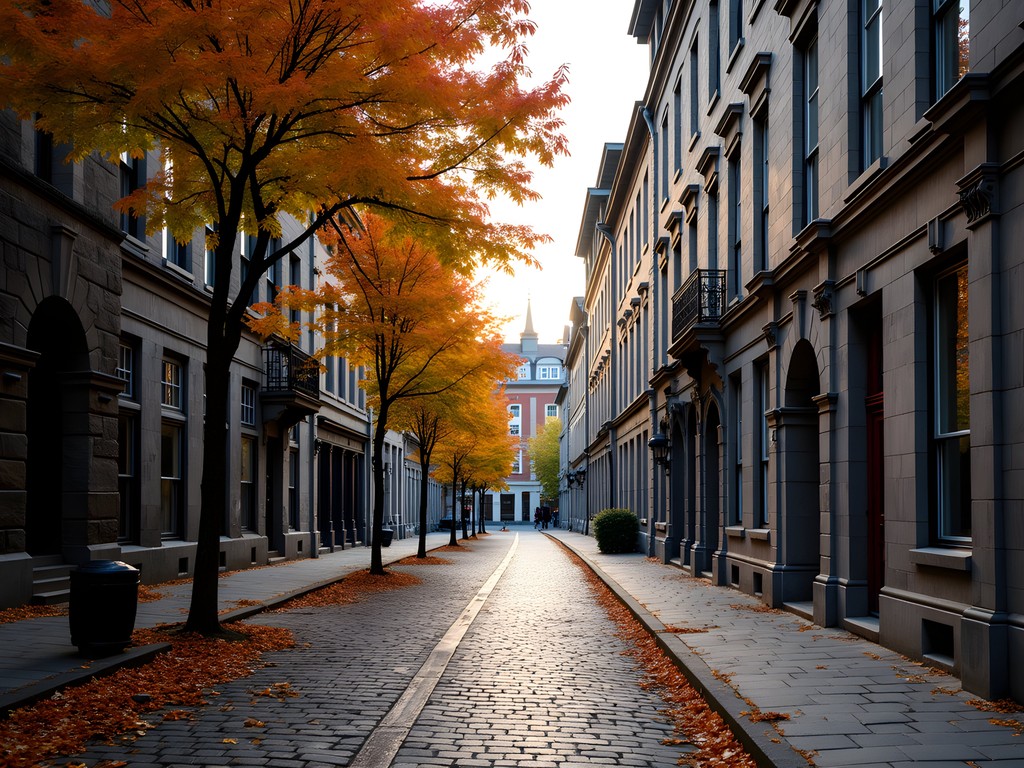
💡 Pro Tips
- Visit Pointe-à-Callière museum first for historical context before exploring Old Montreal
- Use the Montreal Museum Pass if you plan to visit multiple historical sites
- Schedule your Notre-Dame Basilica visit outside of mass times for better viewing opportunities
Eastern Townships: Rural Heritage and Artisanal Traditions
Just 90 minutes southeast of Montreal lies a landscape that speaks to the resilience of French-Canadian culture. The Eastern Townships (Cantons-de-l'Est) offer a fascinating study in cultural preservation amid British colonial influence. This region became home to many French-Canadian families after the British conquest, creating a unique blend of architectural styles and traditions.
In Sherbrooke, the Musée d'histoire showcases how ordinary families lived through extraordinary times. What makes this museum special for children is their collection of everyday objects from different eras – from antique toys to kitchen tools that prompt conversations about how life has changed over generations.
The village of North Hatley, with its Victorian architecture overlooking Lake Massawippi, demonstrates the curious melding of British aesthetic with French-Canadian life. Here, I always make time for a visit to Le Hatley Restaurant, where locally-sourced ingredients honor both culinary traditions.
For families who appreciate outdoor activities with historical context, the Townships' network of cycling paths often follow old trade routes and railway lines. During autumn, the explosion of maple colors against white church steeples creates postcard-perfect scenes at every turn. I capture these vistas with my compact drone, which easily fits in my daypack and provides breathtaking aerial perspectives of these historic landscapes.
The region's artisanal traditions remain vibrant, particularly in cheese-making. At Abbaye de Saint-Benoît-du-Lac, Benedictine monks have been producing award-winning cheeses since 1943, offering a living connection to traditional methods brought from France centuries ago. The monks' Gregorian chants floating through the abbey at specific prayer times create an unforgettable sensory experience that connects visitors to medieval French religious practices.
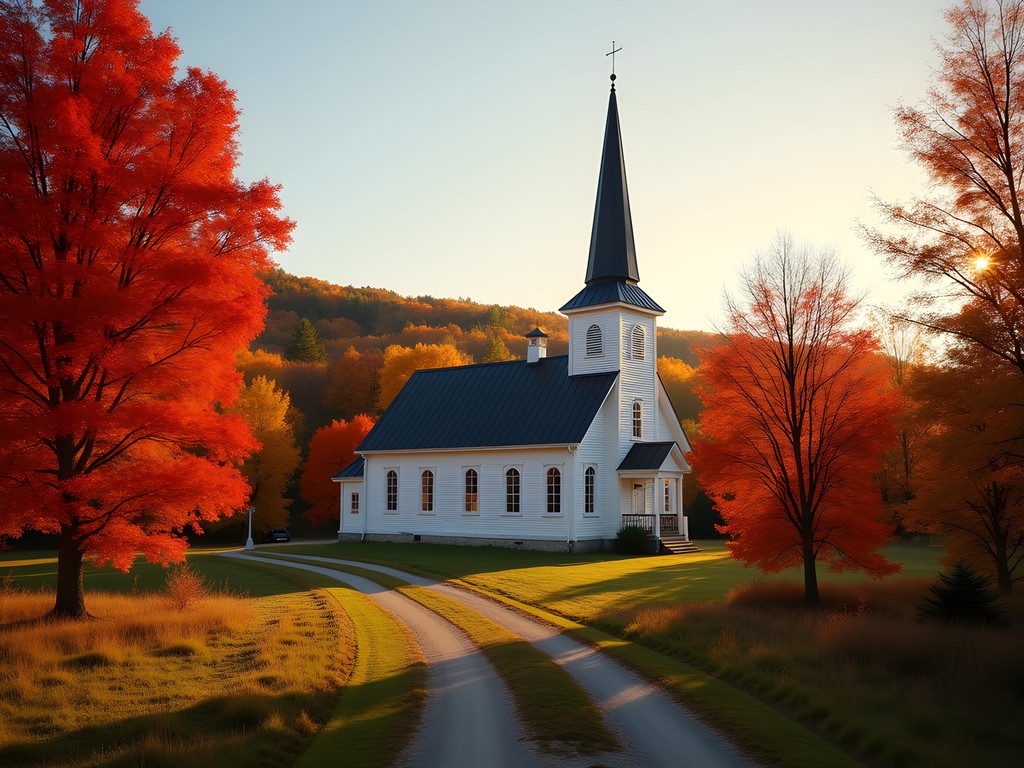
💡 Pro Tips
- Visit during maple syrup season (March-April) for sugar shack experiences or autumn for foliage
- Many historic sites close on Mondays, so plan accordingly
- Pick up a regional cheese map from tourist information centers for a delicious historical food tour
Trois-Rivières: The Forgotten Middle Child
Halfway between Montreal and Quebec City lies Trois-Rivières, Canada's second-oldest city (founded 1634) and what I affectionately call 'the forgotten middle child' of Quebec's historical narrative. Too often bypassed by tourists rushing between the province's two largest cities, this compact riverside community offers an intimate glimpse into everyday French-Canadian life across four centuries.
The city's historic district is wonderfully walkable, making it perfect for families with children who might tire of larger urban centers. Begin at the Musée des Ursulines, housed in a former monastery where Ursuline nuns established one of North America's first schools for girls in 1697. Their educational philosophy was revolutionary for its time, and the museum presents this history in ways that resonate with young visitors.
For an immersive understanding of industrial heritage, the Boréalis Center occupies a former paper mill and chronicles how the pulp and paper industry shaped French-Canadian communities. The interactive water features demonstrating papermaking principles are particularly popular with children, who can create their own paper souvenirs.
Trois-Rivières' compact old town reveals architectural gems that escaped the devastating fire of 1908. Look for the Maison Hertel-De La Fresnière, built in 1824 but incorporating elements from an earlier 1668 structure, exemplifying how French-Canadian building techniques adapted over centuries.
When energy flags, the local specialty of pouding chômeur (poor man's pudding) – a depression-era dessert of cake batter baked in maple syrup – offers a sweet history lesson at Café Frida. I always travel with my insulated water bottle to stay hydrated while exploring, especially important when indulging in these sweet local treats!
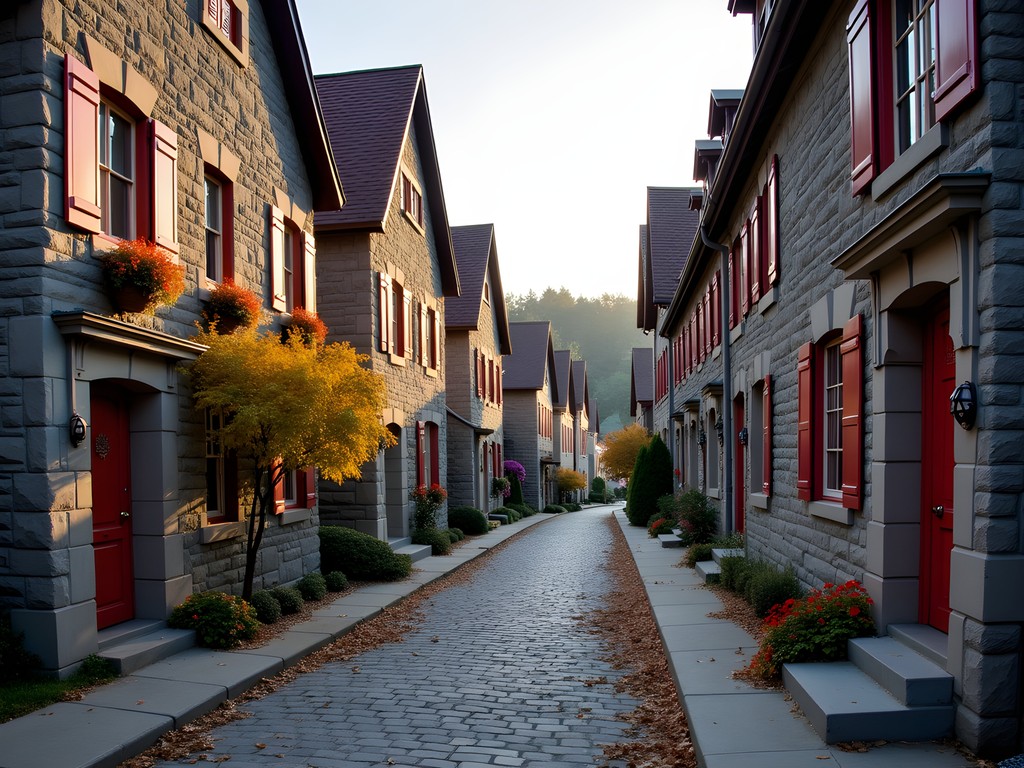
💡 Pro Tips
- The Trois-Rivières Heritage Walking Tour app provides excellent self-guided routes with historical context
- Visit the Sanctuaire Notre-Dame-du-Cap during evening illuminations for a magical experience
- Many attractions offer combined family tickets that save significantly on admission costs
Quebec City: The Fortress of New France
Arriving in Quebec City always feels like stepping through a portal into another time. As the only walled city north of Mexico, its fortifications tell the story of a continent contested by empires. The UNESCO World Heritage old town offers the most concentrated collection of French colonial architecture in North America.
For families tracing French-Canadian history, I recommend beginning at the Plains of Abraham, where the 1759 battle between British General Wolfe and French General Montcalm determined North America's political future. The excellent Battles Museum uses interactive displays to help children understand complex historical events without glorifying warfare.
Wandering the narrow streets of Quartier Petit-Champlain – the oldest commercial district in North America – reveals the everyday life of early colonists. The district's name honors Samuel de Champlain, who established the first permanent settlement here in 1608. During autumn, the crisp air and golden light on the stone buildings create an atmosphere that truly transports visitors back in time.
Place Royale, with its bust of Louis XIV, marks the exact spot where Champlain built his first abitation. The Notre-Dame-des-Victoires Church (1688) standing on this square is among North America's oldest stone churches and commemorates French victories over British forces – before the eventual British conquest.
For a deeper understanding of domestic life, Maison des Jésuites de Sillery presents how early missionaries and settlers adapted European lifestyles to the harsh Canadian climate. Their gardens showcase plants that were essential to survival, including many indigenous species that settlers learned to use from First Nations peoples.
Comme ma grand-mère disait (as my grandmother used to say), you cannot understand a culture until you've eaten its food. I always bring my food tour guidebook to discover authentic eateries. For families, I recommend La Buche, where traditional Québécois cuisine is served in a sugar shack atmosphere that children adore – complete with maple taffy pulling demonstrations during winter months.
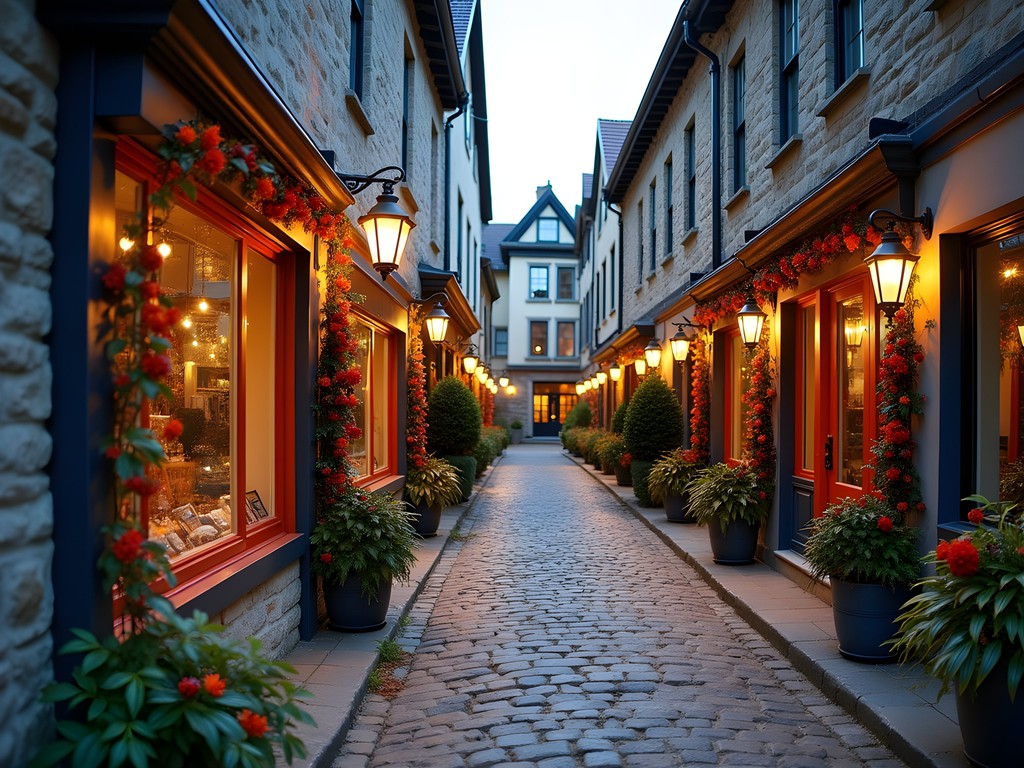
💡 Pro Tips
- Purchase a Family Pass for the National Historic Sites to save on multiple attractions
- Visit Place Royale early in the morning before cruise ship crowds arrive
- Take the funicular between Upper and Lower Town to save little legs from the steep climb
Beyond the Cities: Sacred Sites and Rural Traditions
To truly understand French-Canadian history, one must venture beyond urban centers to the rural communities and sacred sites that form the backbone of our cultural identity. The Chemin du Roy (King's Road), constructed between 1731-1737, was New France's first carriageway connecting Montreal and Quebec City. Following this historic route reveals centuries-old parishes where time seems suspended.
For families seeking meaningful cultural experiences, I recommend a stop at Sainte-Anne-de-Beaupré Basilica, a major pilgrimage site since the 1650s. While its grand architecture impresses, it's the wall of crutches left behind by those claiming miraculous healings that sparks the most questions from young visitors, opening discussions about faith and its role in French-Canadian society.
The Île d'Orléans, just northeast of Quebec City, offers a living museum of rural French-Canadian life. The island's six picturesque villages, connected by a road that circles the perimeter, maintain agricultural traditions dating back to the 1600s. Multi-generational family farms still produce heritage varieties of apples, strawberries, and potatoes using methods passed down through centuries.
During autumn, the island's harvest celebrations provide immersive cultural experiences. Apple picking at orchards like Polyculture Plante allows families to participate in traditions that have sustained French-Canadian communities for generations. I capture these precious moments with my mirrorless camera, which excels at capturing the warm autumn light that bathes the island's historic farmhouses and fields.
For a deeper connection to indigenous histories that intertwine with French-Canadian settlement, the Huron-Wendat Museum in Wendake presents the complex relationship between First Nations peoples and European arrivals. Their guided programs for families explain how knowledge exchange between cultures shaped survival strategies in New France – from canoe-building techniques to medicinal plant use.
In these rural settings, listen carefully for linguistic treasures. Quebec's French preserves words and expressions from 17th-century France that have disappeared from modern European French. When an elderly farmer offers you a 'brunante' tour (at dusk), you're hearing vocabulary directly from the first settlers.

💡 Pro Tips
- Rent bicycles to explore Île d'Orléans at a pace that allows for spontaneous farm stand stops
- Many rural churches are only open during limited hours - check schedules in advance
- Pack a picnic with local products to enjoy at scenic viewpoints along the St. Lawrence River
Final Thoughts
As our journey through Quebec's historical landscape comes to an end, I find myself reflecting on how these stones and stories have shaped not just my identity, but the cultural fabric of North America. From Montreal's cosmopolitan energy to Quebec City's preserved battlements, from forgotten Trois-Rivières to the timeless rhythms of rural parishes, this province offers families an accessible gateway to understanding French colonial history outside of Europe. The autumn leaves may fall, but the roots of French-Canadian culture remain deeply anchored in this soil, continuously nourishing new generations. Whether you're discovering your own Québécois ancestry or simply seeking to understand this unique corner of North American heritage, I hope this journey inspires your family to explore beyond the surface of tourist attractions and connect with the living history that makes Quebec so extraordinary. À la prochaine – until next time – may your travels through time and place be as enriching as they are enjoyable.
✨ Key Takeaways
- Quebec offers North America's most accessible immersion into French colonial history
- Autumn provides ideal conditions for historical exploration with fewer crowds and spectacular foliage
- Including smaller cities and rural areas provides a more complete understanding of French-Canadian heritage
- Family-friendly museums throughout the province make complex history accessible to all ages
📋 Practical Information
Best Time to Visit
September-October for fall foliage and comfortable temperatures
Budget Estimate
$150-250 per day for a family of four (accommodations, attractions, and meals)
Recommended Duration
7-10 days to fully experience the historical journey
Difficulty Level
Beginner

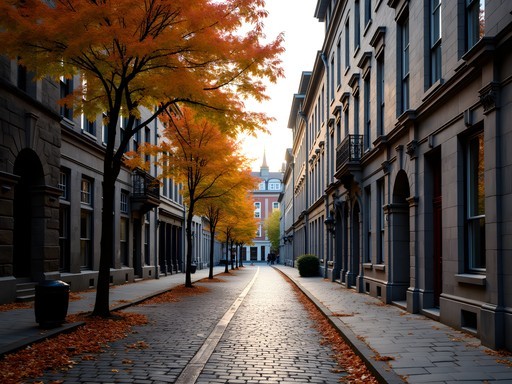

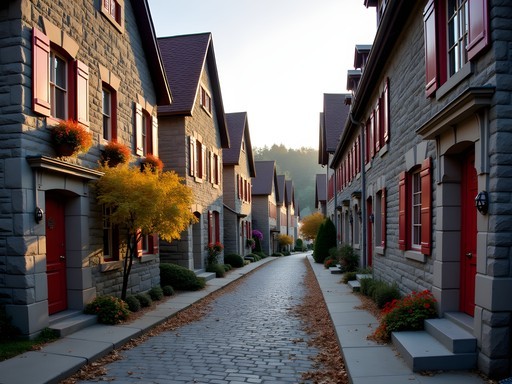
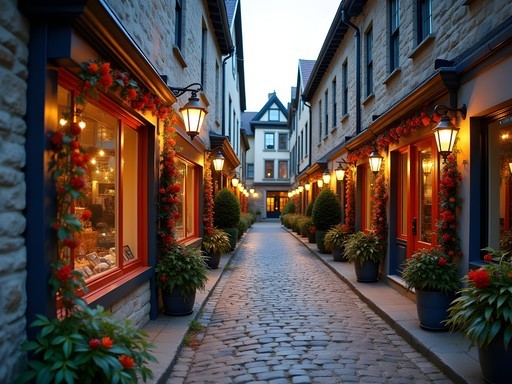
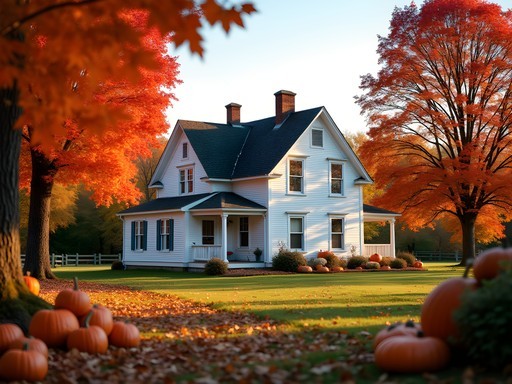









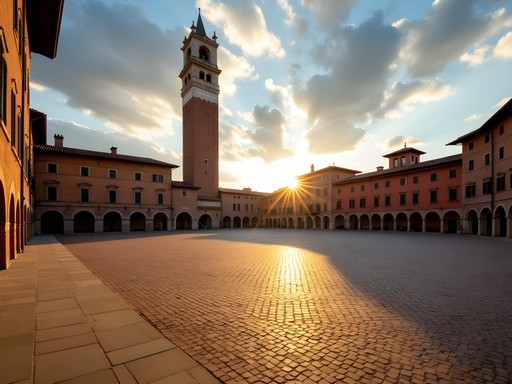
Comments
greenvibes
Beautiful post! The history is so rich there.
travellegend
OMG I'm obsessed with Quebec City!!! Those fortified walls are INCREDIBLE and I spent hours just wandering around taking it all in. Your photos of Place Royale are gorgeous, Stella! Did anyone else try the maple taffy on snow? Life-changing experience! 🍁 Also, the Plains of Abraham gave me chills thinking about all that history. Can't wait to go back and explore more of the province!
wanderlustlegend
Maple taffy was a highlight for my kids! We went during Winter Carnival and it was magical despite the cold.
Taylor Moreau
Brilliantly written piece, Stella. Your journey parallels mine from last autumn, though I approached it from a business travel perspective. What struck me was how seamlessly Quebec preserves its historical identity while embracing modernity. The linguistic divide you mentioned is fascinating - I found carrying a French phrasebook opened many doors, particularly in smaller towns where English isn't as widely spoken. Trois-Rivières truly is underrated; the paper industry museum offers remarkable insights into Quebec's industrial heritage. Did you chance upon any of the traditional sugar shacks?
starblogger
Planning to visit in November - is that too cold to enjoy the outdoor aspects? Any recommendations for indoor activities if the weather turns nasty?
Stella Rose
November can be chilly but often beautiful! The Underground City in Montreal is perfect for bad weather days, and Quebec City has amazing museums. Pack layers and don't miss the warming comfort of authentic poutine!
starblogger
Thanks so much! Definitely adding poutine to my must-eat list.
wanderlustlegend
This brought back so many memories! I did a similar route last year but missed the Eastern Townships. The way you described the cobblestone streets in Old Montreal made me feel like I was back there again. Did anyone else feel like Quebec City was like stepping into a European town? Those narrow streets and the Château Frontenac towering over everything was magical, especially at sunset.
greenvibes
Totally agree about Quebec City! Felt more European than some places I've been to in Europe lol
Taylor Moreau
The Eastern Townships are actually worth a separate trip altogether. The wine route there is exceptional, particularly in autumn when the foliage creates a stunning backdrop. I've found the smaller B&Bs there offer a much more authentic experience than the larger hotels.
Sage Dixon
Stella, your journey through Quebec's historical corridor really resonated with me. I made a similar pilgrimage last year, though I started in Quebec City and worked my way to Montreal. There's something about standing on the Plains of Abraham that makes those history textbooks come alive in a way nothing else can. For anyone following in these footsteps, I'd add a detour to Île d'Orléans just outside Quebec City - it's like stepping back in time with its rural landscapes and traditional Québécois farms. We spent a day cycling around the island, stopping at roadside stands for fresh berries and cider. And don't miss the Citadelle's changing of the guard ceremony if you're there in summer - those uniforms and the precision of the Royal 22nd Regiment are impressive even if you're not typically into military traditions.
beachbackpacker
Those photos of Quebec City in autumn are absolutely stunning! Adding this trip to my bucket list right now.
oceanlover
Beautiful post! I'm planning a trip for October next year. How was the language barrier? My French is basically nonexistent beyond "bonjour" and "merci" - did you find it difficult to get around outside the major cities?
Stella Rose
You'll be fine in Montreal and Quebec City where most people in tourism speak English. The Eastern Townships can be more challenging, but I found people very patient with my rusty French. Learning a few key phrases helps show respect, but you'll get by without fluency!
wanderlustace
I survived with basically no French! Most menus have English translations and Google Translate saved me a couple times in smaller towns.
islandstar
Did you find Quebec City or Montreal more walkable? Planning a trip with my parents (60s) and trying to figure out where to spend more time.
Stella Rose
Quebec City's old town is more compact and easier for walking, but it has more hills and cobblestones. Montreal covers more ground but has excellent public transit. For parents in their 60s, I'd suggest more time in Quebec City but staying inside the walls to minimize walking distances.
Frank Garcia
What a fantastic historical perspective on Quebec! I appreciate how you've connected the architectural elements to their historical contexts. One thing I found fascinating during my visit was how the linguistic politics have shaped preservation efforts - with French heritage sites receiving different attention than English ones. The Plains of Abraham museum does a good job presenting multiple perspectives on the pivotal battle. For history buffs, I'd also recommend the Citadelle tour in Quebec City - the changing of the guard ceremony is quite impressive and the fortifications tell an important story about colonial military history.
Venture X
Premium card with 2X miles, $300 travel credit, Priority Pass